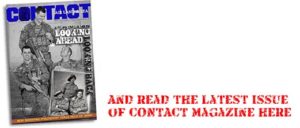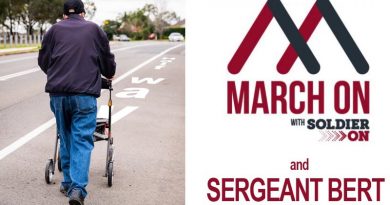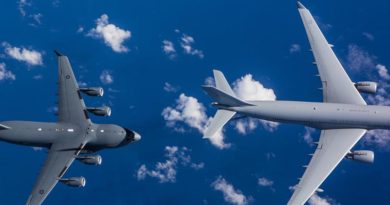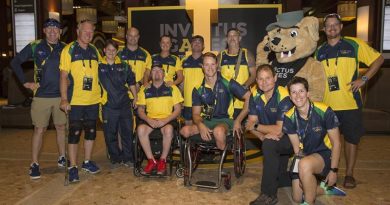Digger explains emotional road to Melbourne art exhibit
Share the post "Digger explains emotional road to Melbourne art exhibit"

Cairns-based serviceman Phil Johns is one of 18 veteran artists participating in a group exhibition in Melbourne with other current and ex-servicemen and women.
CAPTION: Abstract art by Phil Johns in collaboration with Anila Reddy [modified by CONTACT]
The artworks express the hidden wounds from service life, explore the concept of identity of modern-day military life and highlights veterans’ suicide.
The exhibition, A March to Art: Identity is open 10am-5m daily until the end of ANZAC Day April 25 at Space @ Collins, 278 Collins Street Melbourne.
Phil began military service in 2003 as a reserve rifleman and says his time in service has been both challenging and rewarding.
He’s been on five deployments including two operational and became acquainted with the non-profit that runs art therapy programs, the Australian National Veterans’ Art Museum (ANVAM), after working alongside art therapist Tanja Johnston on the Australian Defence Force’s Arts for Recovery, Resilience and Teamwork (ARRTS) Program in Canberra in 2015.
“As a serving member of the defence community, I’ve always felt a sense of duty toward fellow members going through periods of difficulty; particularly if their issues are service related.” Phil says.
“I was told about ANVAM and felt immediately drawn to lending support in any way I could.
“I’ve been fortunate to have been invited by ANVAM to exhibit with other artists who have dedicated portions of their lives to the defence of Australia.
“They need a platform dedicated to their unique narrative.
“ANVAM is that platform.”
The exhibition is being hosted by ANVAM in Melbourne to showcase 18 artworks by current and ex-Defence Force men and women and families impacted by service.
Phil’s painting, titled ‘The Coriolis Effect’ was co-created by fellow artist Anila Reddy who he collaborates with out of an artist-run gallery and studio in Cairns known as Crate59.
“The painting is about an effect whereby a mass moving in a rotating system experiences a force – the Coriolis force – that’s denoted in the painting by Anila’s swooshing piece of abstraction.
“I’ve painted a figurative element in the work of an almost camouflaged soldier with a sniper rifle.”
The ADF has recognised the value of arts programs for improved wellbeing, self-esteem and social functioning.
Creative art therapy plays an increasing role in the recovery process for returned modern-day soldiers, sailors, airmen and women.
Art therapist Tanja Johnston from ANVAM says physical wounds may heal, but hidden ones take a toll on veterans’ health and on their families.
“Art therapy helps to process hidden wounds, express the unspoken and improve mental and emotional health.”
ANVAM Chairman and Director Mark Johnston said that veterans were suiciding at the rate of one every five days.
“Trauma can silence its victims but art-based therapy can help those suffering from psychological wounds of war and service,” he said.
“ANVAM is holding this inaugural exhibition to provide an opportunity for Australian veterans to be validated.
“We aim to hold it annually and possibly around the country.”
Mark said that ANVAM was still campaigning strongly for the veteran community to have a permanent gallery space and place of healing.
“We’re doing all we can to stop veteran suicides and to help the most vulnerable feel supported and understood,” he said.
A March to Art: Identity is open 10am-5pm daily until ANZAC Day, 25 April in Space@Collins Gallery, 278 Collins Street, Melbourne.
For more information about the exhibition or how to help the veterans, visit www.anvam.org.au
.
.
.
.
.
.
.

.
.

.
Share the post "Digger explains emotional road to Melbourne art exhibit"

![abstract art by Phil Johns in collaboration with Anila Reddy [modified by CONTACT]](https://www.contactairlandandsea.com/wp-content/uploads/2017/04/phil_johns_art_modified-800x444.jpg)





